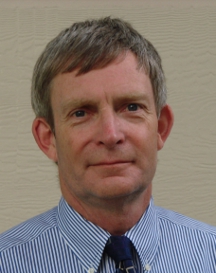Dobrin Lecture
Click here to return to archives.
Dobrin Lecture 2014
April 2nd, 2014
UH Hilton, Shamrock Ballroom
Speaker: Dr. David Monk
Lecture Title: How technology changes seismic acquisition: A look backwards and forwards in time
About the Speaker:

David Monk
Past President of the SEG and
Global Director for geophysics for Apache Corporation
Dr. Monk gained a PhD in physics from Nottingham University in England in 1980, and for the last 30 years his career in geophysics has involved working in most aspects of seismic acquisition and processing for seismic contractors, consulting and working for an oil company. His career started with SSL in Nigeria before joining GSI in the UK as an area geophysicist. He then worked in the USA and Norway before returning to the USA as part of the then HGS research and development group. In 1993 he joined a seismic consulting company, and subsequently formed Energy Innovations Technical Services where he acted as president from 1994 to 1999. In 2000 he joined Apache where he now acts as director of Geophysics. He is well known for his technical contributions to industry, and has received Best Paper awards from SEG (1992, and honorable mention in 2005), Canadian SEG (2002) and the Hagedoorn Award from EAGE (1993).
David has been a member of SEG for 27 years. He served a Technical Chairman for SEG's 75th Anniversary meeting in 2005, was elected as Vice President of SEG in 2006 and received Life Membership from SEG in 2009. He served as Chairman of SEG Global Inc. at its formation in 2008, and has also worked on the Meetings Review, Constitution and Bylaws, EAGE Collaboration, and Global Development Advisory committees.
About the Lecture:
EThe basics of seismic acquisition are controlled by three elements. The geometry between source and receiver, the magnitude and bandwidth of the signal put into the earth and retrieved, and the record length. Given such a simple set of controlling parameters it might initially be difficult to see how technology changes can have a significant impact on seismic acquisition. It’s only when we stand back and take a long term view at how seismic operations have evolved that we find that change is slow but relentless, and continues today.
In this lecture I will show that seismic acquisition changes follow a well know law relating to technology, and illustrate how things have changed, and what the future is likely to look like.